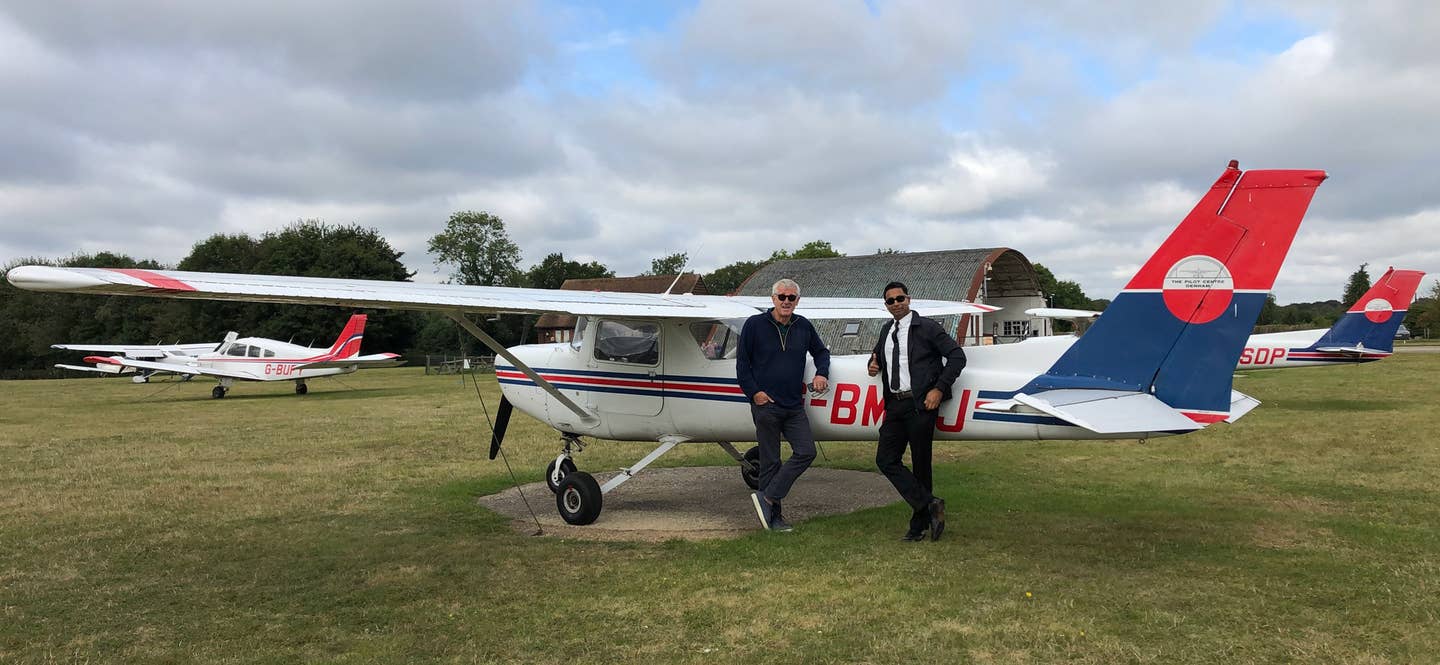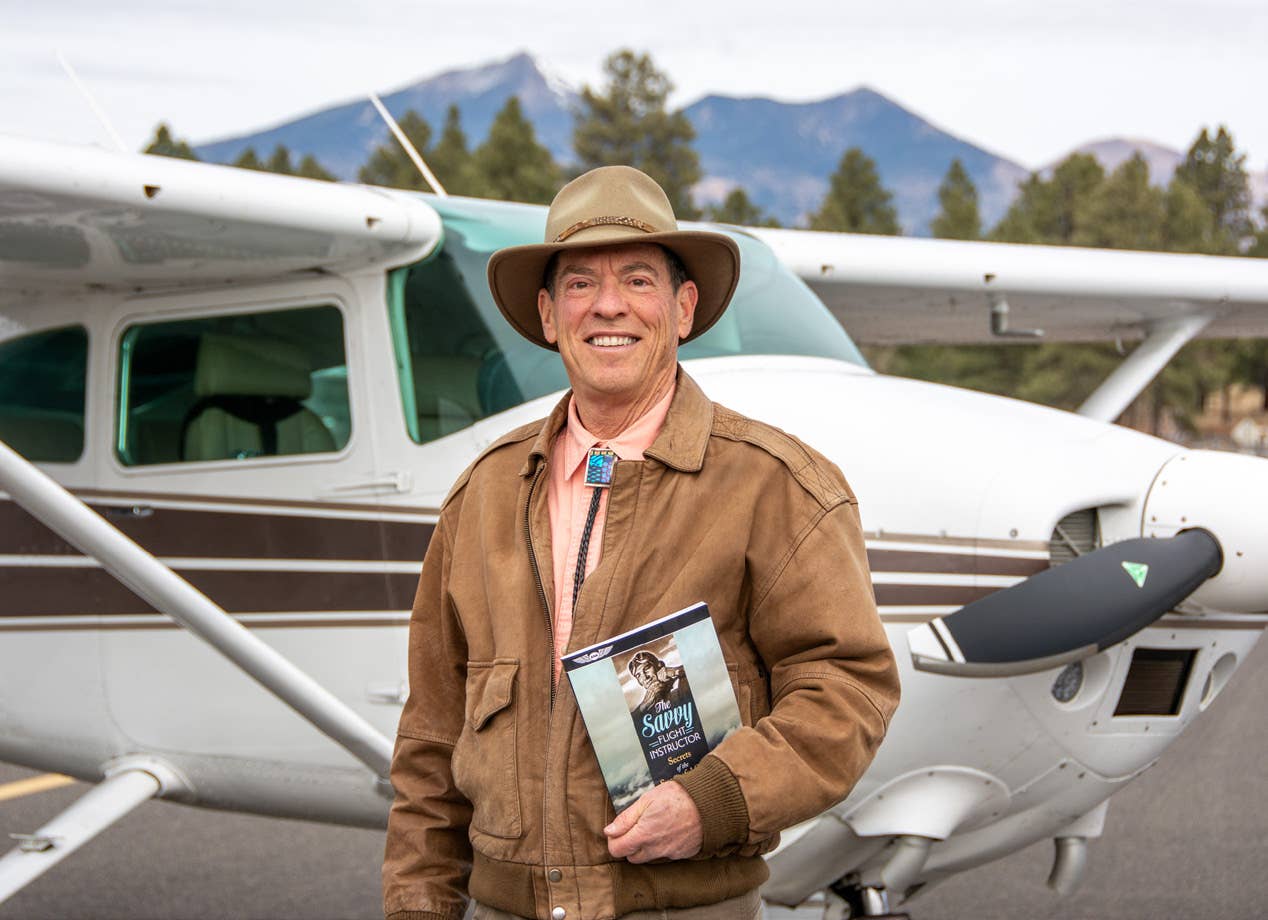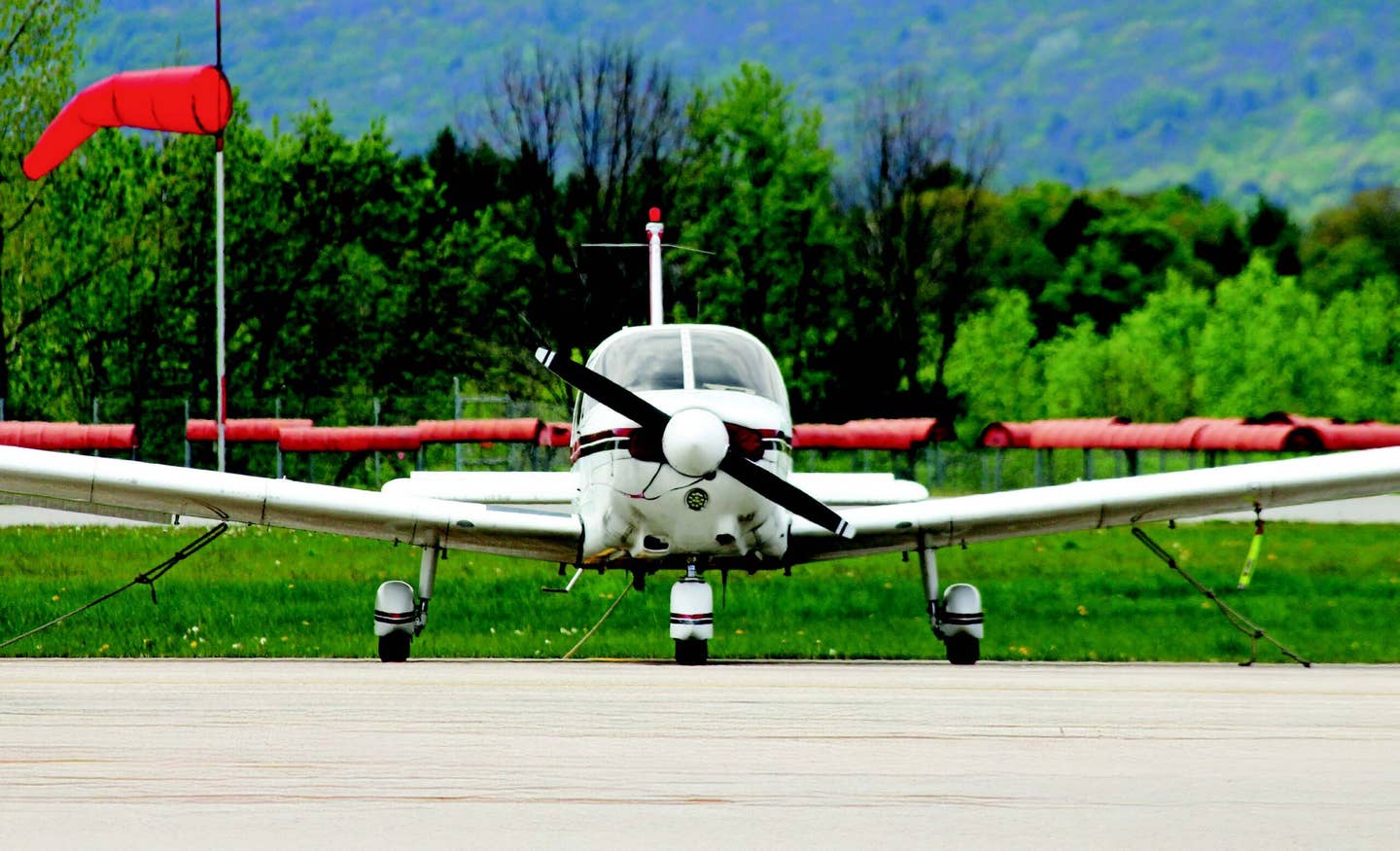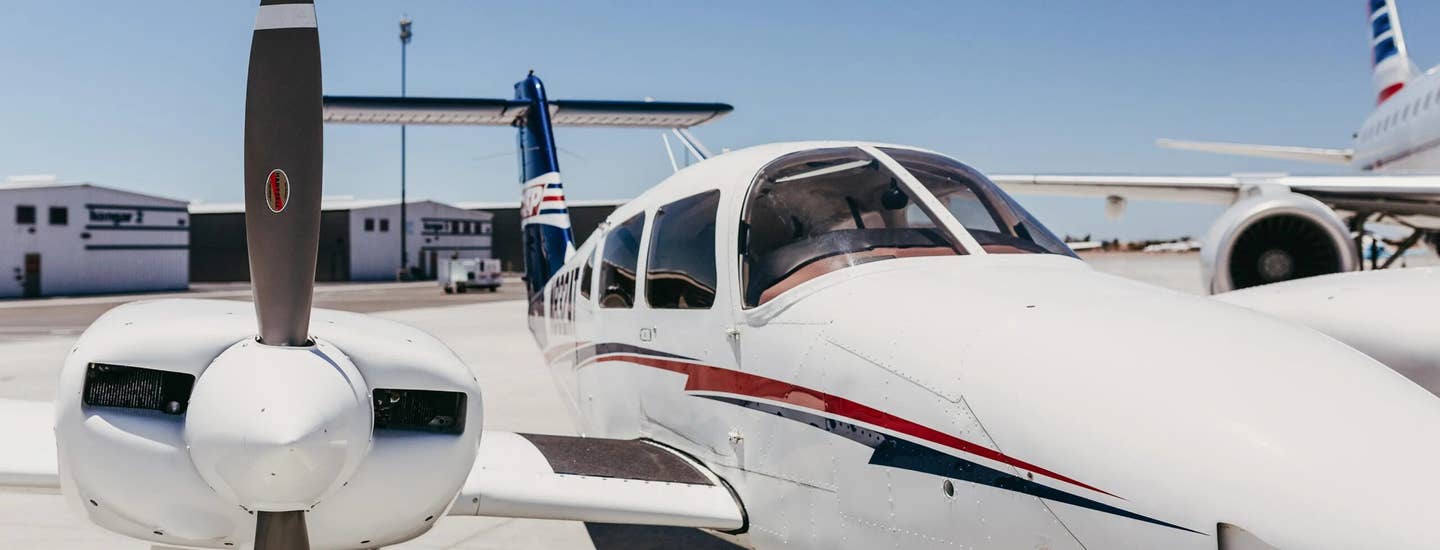
At the age of 73, Graham Diamond earned his private pilot certificate with help from CFI Ravel Banwarie. Courtesy Ravel Banwarie
Teaching someone to fly can be a life-altering experience on the same level as teaching someone to read, swim, or ride a bike. All these skills increase a person’s confidence and give them a sense of freedom. But as anyone who has been through the flight training process will tell you, learning to fly is a lot more than learning to control an aircraft. Flight training changes you as a person, especially when you have a flight instructor who makes a profound, positive difference in your life.
Anxiety and Age
Graham Diamond, of the United Kingdom, began his flight training at the age of 70 in a Cessna 152. He spent a winter studying for the knowledge portion of the training, then went shopping for an instructor. He found Ravel Banwarie at The Pilot Centre in Denham, London.
The first challenges the pair faced were Diamond’s anxieties over risk and his rate of progress.
“I had lost my brother-in-law, an experienced Canadian Pacific captain, in a GA accident some years previous,” Diamond explained. “The professionalism of the flying school and Ravel’s insistence that I understand and adhere to the correct procedures quickly dispelled any anxiety, and I felt able to proceed with confidence through the flight training.”
“Concerns should be met with empathy and compassion,” Banwarie said. “Sit down and understand your student, be patient, open-minded, and willing, which will also inevitably lead to the breakdown of barriers they came in with. Next, develop a plan and adapt (the plan) as the process happens. Yes, there will be difficult moments, but with good communication, resilience, and a desire to succeed on both sides—and I emphasize the both—the end result will be improvement and success.”
As the flight training progressed, Diamond, like so many learners, had his share of learning plateaus and sometimes found himself feeling overloaded in the cockpit.
“I leaned heavily on Ravel to get me through these,” Diamond says. “Probably the biggest personal challenge, however, was sustaining my self belief through the ‘two steps forward and on step back’ middle stages of the flight training. Added to this self-doubt was the fear that, at my age, I was simply not up to the challenge. Ravel was quite brilliant in demanding excellence, initially praising effort and coaching me through to a belief that I could cope with this training and emerge as a competent and safe pilot.
“Ravel taught me that 90 percent of the demands on me as a pilot can be anticipated and that a good understanding of the behavior of the aircraft, flight situational awareness, ATC procedures, and rigorous preflight planning are achievable paths to manage in-flight workload and free brain space for the unexpected,” he added.
This process began by reframing the concept of multitasking, as the very term can be intimidating to some.
“Multitasking is a myth, as studies have shown,” Banwarie said. “Task prioritization is key, and this is what I teach. There are multiple tasks involved when flying an aircraft, but with effective instruction and experience, one learns to prioritize which task is the most important at that particular time. A lot of the workload can also be reduced by prior planning and strategizing on the ground. Many of the demands involved can be anticipated on the ground.”
Banwarie taught Diamond to use his age as an advantage, noting that many older learners have life experience that has an aviation correlation.
“To all the mature students reading this, and like I said to my student, break down those mental barriers. Why see it as a negative? Instead, see the positives: you are experienced in life, have already made many important decisions (demonstrating decision-making), have communicated and learned how to communicate (demonstrating effective communication), and have faced many obstacles and overcame them (demonstrating resilience).” All these things, Banwarie noted, can be applied to the aviation learning process.
It worked, said Diamond, who at the age of 73 is the proud holder of a private pilot certificate.
If you would like to share your story about an exceptional CFI, hit us up at editorial@flying.media.

Sign-up for newsletters & special offers!
Get the latest FLYING stories & special offers delivered directly to your inbox






